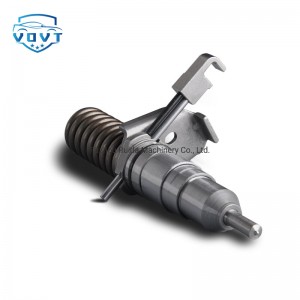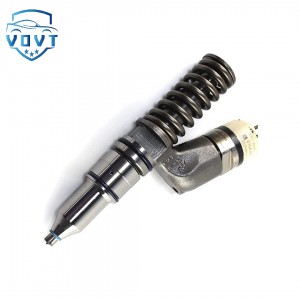New High Quality Diesel Injector 253-0614 10R-3263 253-0615 10R-3264 272-0630 10R-7229 For CAT C15
Products Description
| Reference. Codes | C15 |
| Application | C15 |
| MOQ | 4PCS |
| Certification | ISO9001 |
| Place of Origin | China |
| Packaging | Neutral packing |
| Quality Control | 100% tested before shipment |
| Lead time | 7~10 working days |
| Payment | T/T, L/C, Paypal, Western Union, MoneyGram or as your requirement |
Where can we start to adjust the injection timing of the injector?
Mechanical adjustment
Adjust the injection advance angle: The injection advance angle refers to the crankshaft angle corresponding to the distance between the piston and the compression top dead center when the injector starts to spray. Changing the injection advance angle can directly affect the injection time. This can be achieved by adjusting the installation position of the injection pump, such as rotating the injection pump body to change its relative angle with the engine crankshaft. Advancing the injection advance angle and the injection time will advance, and the fuel will have more time to mix with the air, but premature injection may cause combustion knock, power reduction and increased fuel consumption; delaying the injection advance angle and the injection time will delay the combustion temperature and pressure, and reduce nitrogen oxide emissions, but too late injection will cause incomplete combustion and increase hydrocarbon and particulate matter emissions.
Replace gaskets of different thicknesses: Some engines can adjust the injection time by increasing or decreasing the thickness of the gasket at the injector or injection pump related parts. Thicker gaskets will change the position of the injector or injection pump, thereby affecting the injection time.
Electronic control
Modify engine control unit (ECU) parameters: Most modern engines use electronically controlled fuel injection systems, and the ECU accurately controls the injection time based on various sensor signals. Professional diagnostic equipment and software can be used to modify and optimize the injection time parameters in the ECU. For example, according to the different operating conditions of the engine (such as idle, medium load, high load, etc.), adjust the MAP diagram of the injection time so that the injection time matches the engine operation requirements more accurately.
Upgrade ECU program: With the continuous development of engine technology and emission regulations, manufacturers may launch new ECU programs. These programs optimize parameters such as injection time, which can improve engine performance and reduce emissions. By upgrading the ECU program, the engine can adopt more advanced injection time control strategies.
Reference operating condition data
Consider engine speed: The required injection time is different for different engine speeds. Under high-speed conditions, the piston moves fast and the combustion time is short. The injection time needs to be appropriately advanced to ensure that the fuel has enough time to mix and burn with the air; under low-speed conditions, the injection time can be appropriately delayed to improve combustion efficiency and reduce emissions.
Consider the engine load: The engine load reflects its working intensity. Under high-load conditions, more fuel is needed to provide power, and the injection time may need to be extended; under low-load conditions, while reducing the injection amount, the injection time can also be adjusted accordingly to avoid fuel waste and incomplete combustion.
Consider environmental factors: Factors such as ambient temperature, pressure and humidity will affect the air density and fuel evaporation characteristics, which in turn affect the combustion process. In cold weather, the air density is high and the fuel evaporates slowly. The injection time can be appropriately advanced and the injection duration can be increased to ensure sufficient atomization and combustion of the fuel; in plateau areas, the air is thin, and the injection amount and injection time can be appropriately reduced.
Monitoring and feedback adjustment
Use sensor monitoring: Use various sensors on the engine, such as crankshaft position sensor, camshaft position sensor, intake pressure sensor, water temperature sensor, etc., to monitor the engine's operating status and environmental parameters in real time. The ECU dynamically adjusts the injection time based on the information fed back by these sensors to keep the engine in the best working condition.
Exhaust emission monitoring: The exhaust emission of the engine is monitored through equipment such as exhaust gas analyzers, and the injection time is adjusted according to the emission results. If the nitrogen oxide emission is too high, the injection time can be appropriately delayed; if the hydrocarbon and particulate matter emissions are too high, the injection time can be advanced or the injection duration can be optimized.























